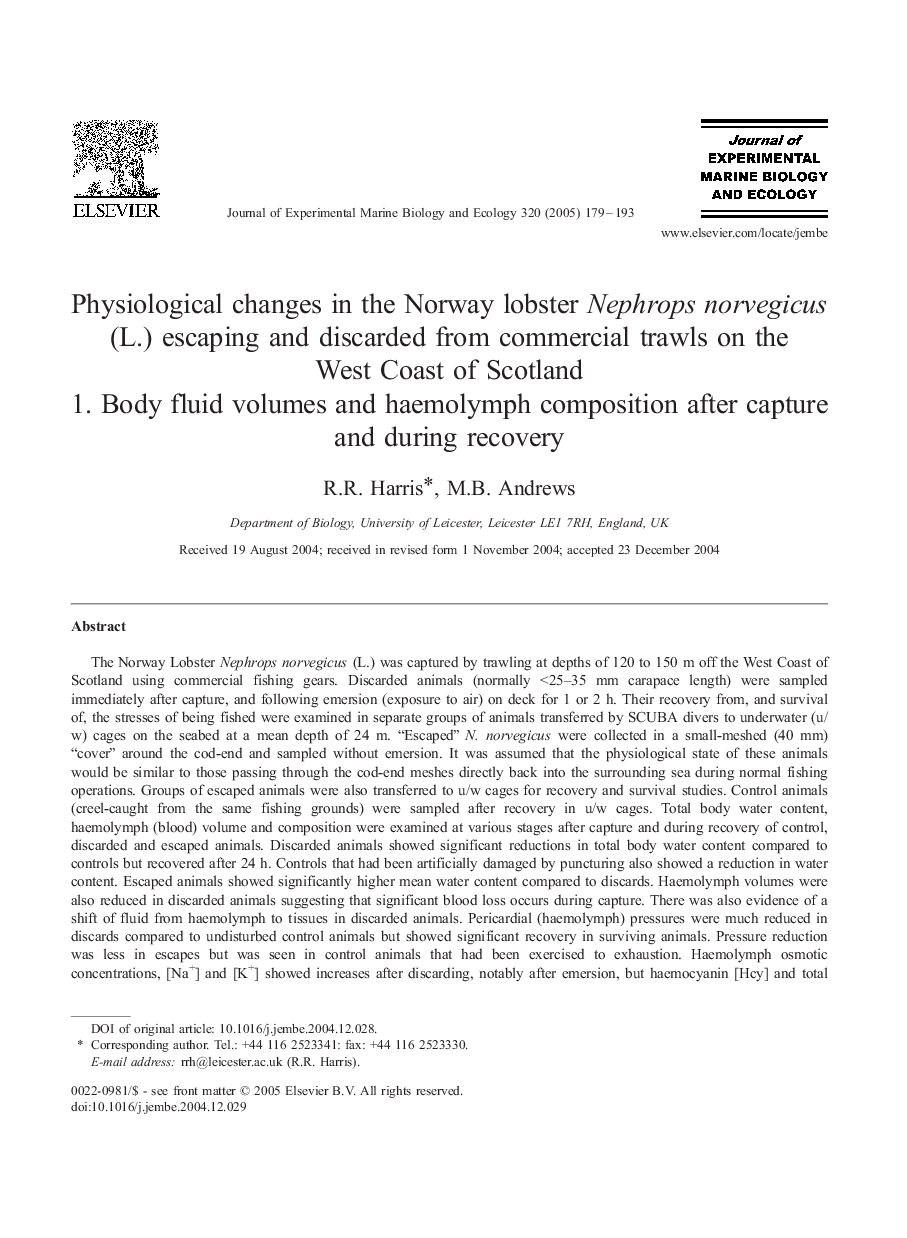| کد مقاله | کد نشریه | سال انتشار | مقاله انگلیسی | نسخه تمام متن |
|---|---|---|---|---|
| 9448677 | 1618494 | 2005 | 15 صفحه PDF | دانلود رایگان |
عنوان انگلیسی مقاله ISI
Physiological changes in the Norway lobster Nephrops norvegicus (L.) escaping and discarded from commercial trawls on the West Coast of Scotland
دانلود مقاله + سفارش ترجمه
دانلود مقاله ISI انگلیسی
رایگان برای ایرانیان
کلمات کلیدی
موضوعات مرتبط
علوم زیستی و بیوفناوری
علوم کشاورزی و بیولوژیک
علوم آبزیان
پیش نمایش صفحه اول مقاله

چکیده انگلیسی
The Norway Lobster Nephrops norvegicus (L.) was captured by trawling at depths of 120 to 150 m off the West Coast of Scotland using commercial fishing gears. Discarded animals (normally <25-35 mm carapace length) were sampled immediately after capture, and following emersion (exposure to air) on deck for 1 or 2 h. Their recovery from, and survival of, the stresses of being fished were examined in separate groups of animals transferred by SCUBA divers to underwater (u/w) cages on the seabed at a mean depth of 24 m. “Escaped” N. norvegicus were collected in a small-meshed (40 mm) “cover” around the cod-end and sampled without emersion. It was assumed that the physiological state of these animals would be similar to those passing through the cod-end meshes directly back into the surrounding sea during normal fishing operations. Groups of escaped animals were also transferred to u/w cages for recovery and survival studies. Control animals (creel-caught from the same fishing grounds) were sampled after recovery in u/w cages. Total body water content, haemolymph (blood) volume and composition were examined at various stages after capture and during recovery of control, discarded and escaped animals. Discarded animals showed significant reductions in total body water content compared to controls but recovered after 24 h. Controls that had been artificially damaged by puncturing also showed a reduction in water content. Escaped animals showed significantly higher mean water content compared to discards. Haemolymph volumes were also reduced in discarded animals suggesting that significant blood loss occurs during capture. There was also evidence of a shift of fluid from haemolymph to tissues in discarded animals. Pericardial (haemolymph) pressures were much reduced in discards compared to undisturbed control animals but showed significant recovery in surviving animals. Pressure reduction was less in escapes but was seen in control animals that had been exercised to exhaustion. Haemolymph osmotic concentrations, [Na+] and [K+] showed increases after discarding, notably after emersion, but haemocyanin [Hcy] and total haemolymph protein concentrations were less affected. The effect of these changes on longer term survival and recovery from the stress of capture are discussed.
ناشر
Database: Elsevier - ScienceDirect (ساینس دایرکت)
Journal: Journal of Experimental Marine Biology and Ecology - Volume 320, Issue 2, 29 June 2005, Pages 179-193
Journal: Journal of Experimental Marine Biology and Ecology - Volume 320, Issue 2, 29 June 2005, Pages 179-193
نویسندگان
R.R. Harris, M.B. Andrews,